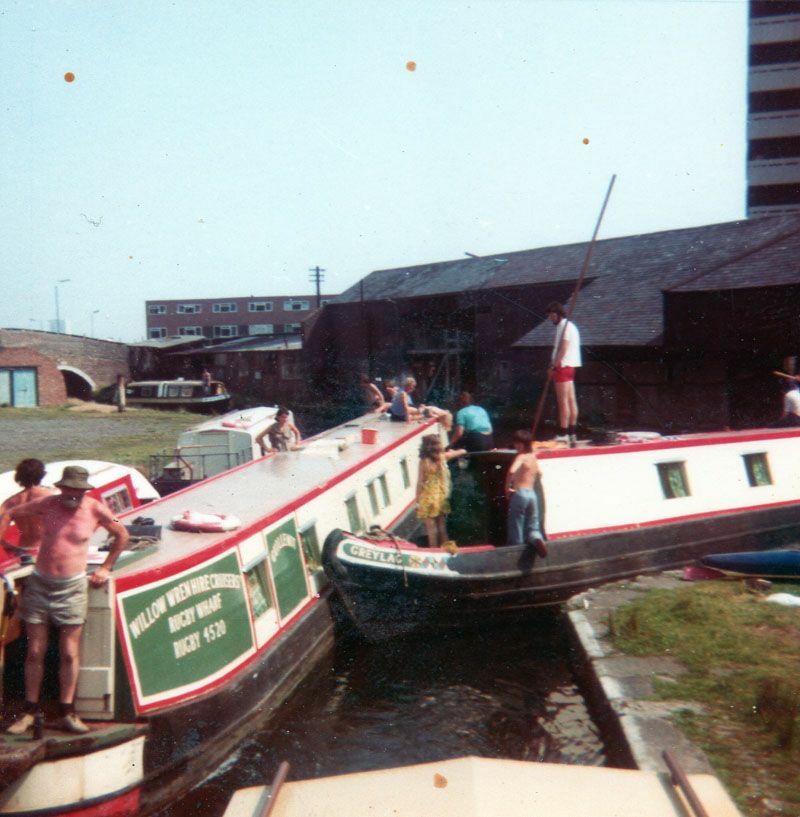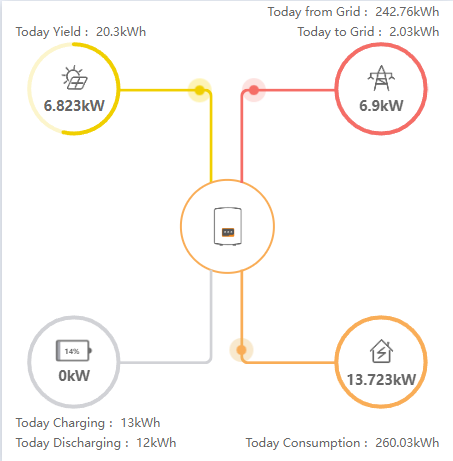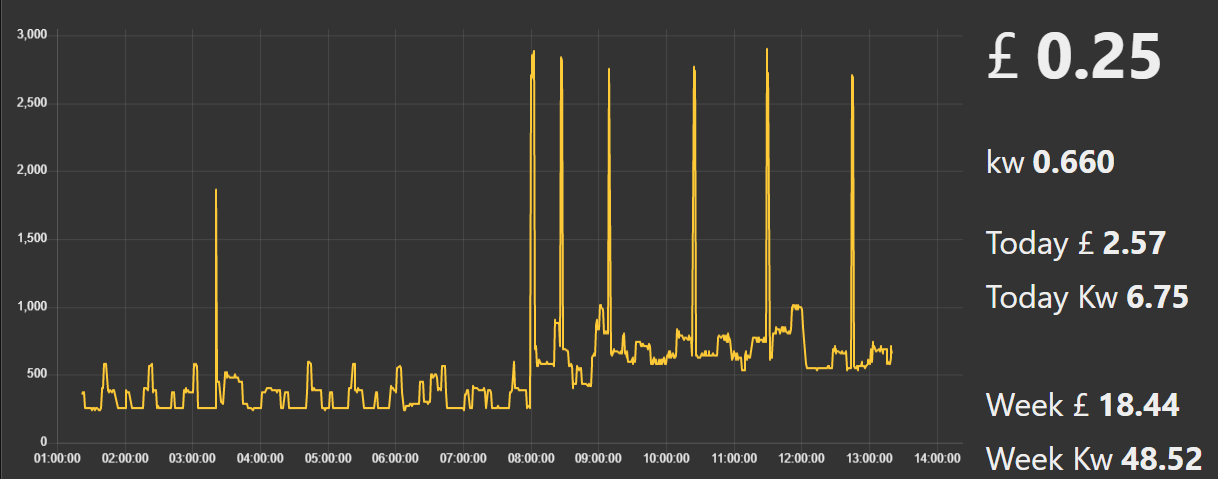-
Posts
1,498 -
Joined
-
Last visited
-
Days Won
2
Content Type
Profiles
Forums
Events
Gallery
Blogs
Store
Everything posted by Jess--
-
we always found that consistently between 80-85 hours our lpws4 would start to hunt slightly at our usual cruising speed (slightly faster or slower was rock solid), we always took it as a sign that we needed to change the oil in 2 days time (presumably it was because we had wear on the rack at the most used position). With practice we got the oil change down to around 30 mins.
-
Common around here a couple of years back to have large barns rented out only to have the filled (and I really do mean filled completely) with tyres. Of course once it's discovered the people renting the barn have vanished and the owner has to pay to dispose of the tyres (at around £130 per ton / £1 per tyre)
-

Moorings which allow you to rent your boat out .
Jess-- replied to KEVIN121C's topic in Moorings & Marinas
I'm guessing that from the Rent rather than Hire in the title the OP means rented out via airbnb etc where it's treated as holiday cottage that floats. -
Most of the go-pro cameras have a wi-fi link (not bluetooth) which should work over a fair distance (we never had any issues at 45 feet) using their app you should be able to get a live image on an ipad or similar android tablet (and be able to record with a single tap). Ours wasn't used to see what was ahead, more used to record nice views or unusual things happening.
-
I suspect that the 25 boats that have been moved on with no license / Insurance (and presumably no license or at least an invalidated one) would also come under the umbrella of being poor / non payers of mooring fees. I suspect that with covid there are probably a fair few boats sat in marinas that currently have a deceased owner because all of the paperwork relating to the boat is on the boat and relatives may know that John "had" a boat somewhere but no idea of where.
-
My go anywhere / do anything laptop is a 16 year old dell, it was bought new from Tesco's of all places and came with vista installed vista was upgraded to windows XP and has since been upgraded through 7 & 10 Apart from 1 replacement battery everything is original and it's in daily use (currently running a co2 laser cutter) but recent excursions include tuning a supercharged v8 jaguar engine in a custom 4wd vehicle... from the passenger seat while doing stupid speeds & angles in a quarry.
-
No grid power, no drinkable water, Heating via wood burner, cooking via bottle fed lpg cooker and access only via water or towpath... All of the issues that come from boat living without the option of starting your engine and moving somewhere new. The list glosses over waste by saying it's via a septic tank, I would imagine that would be problematic to get emptied (and would probably need upgrading / replacing to comply with the new regs that kicked in from 2020 and take effect on change of ownership) I remember talking with the residents around 6 years ago and they seemed new to the property at the time, they were using a small open fibreglass boat for transport (including school run) and were experimenting with an unofficial turbine dropped in the bywash for extra power
-
This post cannot be displayed because it is in a forum which requires at least 10 posts to view.
-
This post cannot be displayed because it is in a forum which requires at least 10 posts to view.
-
With the mention of willow wren above here's a photo from 74(ish) of a couple of their boats having fun turning in Coventry basin (I don't know if the windows survived)
-
I would imagine that if his boat were on a residential mooring and he had failed to pay his mooring fees the boat would have been removed quite swiftly (3-6 months) although probably only onto another section of canal outside of the residential moorings where he would then have to comply (or not) with the CC rules. There are probably a lot more legal options for kicking a boat (with or without occupant) out of a mooring space than the blunt tool of section 8 that CRT have to use to remove a boat from the canal totally
-
Could it be the water circulation pump? (assuming water heater)
-
Best price I could find was £1.22 including postage from China* (although that was for 20 triacs) My current big ticket fixed items for cheap parts are a £4500 laser cutter that needed a £0.12 schmitt trigger chip (smd of course) and a £8000 (estimated value) car that needed a small coil of wire, a magnet and a FET (AKA a crank position sensor) £23.17 cost. * knowing the Chinese supplier it's 50:50 as to whether the item is actually in China or a UK warehouse.
-

Narrowboat - Internal Surveillance System Suggestions
Jess-- replied to Bugsworth Tippler's topic in Boat Equipment
Rather than messing with wireless cameras, phones & apps etc why not just use a car reversing camera kit They are already 12v (and designed for automotive use so 14v while charging should be fine) something like https://www.ebay.co.uk/itm/134331578228- 20 replies
-
- 2
-

-
- surveillance
- internal
-
(and 1 more)
Tagged with:
-
Some things just don't need encrypting and with newer browsers throwing a fit it just makes things difficult. one example I ran into recently was a remote temperature sensor, you go to the site and it shows the current temperature and a graph for the previous 24 hours, no login forms / no scripts / nothing but raw html (not even an image file) now with browsers refusing to connect I either have to work out how the hell to set up https on an arduino within the 5k of memory that is unused or scrap a few dozen sensors and replace them with something a lot more expensive & power hungry
-
Our experience of towing a powered narrowboat (with dead engine & small rudder) was that breasted worked best (to be honest we just hooked centre lines and pulled it tight). our attempts at towing with a single (long or short) line were hilarious failures until we lashed a long gangplank to the swan neck giving a nice flat rudder (more of an oar) with a lot of travel to either side, then it needed a bit of muscle to steer but was actually very controllable.
-

Realistic and Brutal Honesty Needed For Disabled Potential Boater
Jess-- replied to rooslootoo's topic in New to Boating?
Your inverter has the capability of totally emptying those batteries (100% to 0%) in 90 minutes or less (and with lithiums you never want to be doing that) those solar panels (under perfect conditions) will need 9-10 hours of full sun to recharge the batteries assuming the losses through the mppt controller aren't too high. this may work during the summer, during spring and autumn you will struggle, during winter you will have more chance of seeing elvis perform live than getting your batteries to full charge. When I previously said that members on here were charging from their engines I meant fairly hefty diesel engines with alternators giving 70-150A of 12v output which on paper would be capable of charging your batteries in 3-6 hours assuming the batteries can take that current at all stages of charging (in reality it would probably be nearer 5-9 hours) The power outputs from outboards are tiny as all they are really designed to do is recharge the battery used to start them, I would guess at most being under 10A output (based on the wiring thickness they seem to use) and that would probably only be produced with the engine running at over half of it's top speed (not at a little over tickover which is what you'll be doing on the canals), Assuming you could get the full 10A you would need to run the outboard for 40 hours to recharge your batteries (that you can empty in 90 minutes). Another things to bear in mind with outboards is Fuel, Petrol is a much more dangerous fuel than diesel and has much tighter controls on how it can be stored and used on boats, as a result you will find that there are very few places on the canal network that you can refuel directly so every bit of fuel you use you will have to carry from a petrol station to the boat. Another thing springs to mind... You show a shower in your layout.... where are you getting your hot water? Most boats have a hot water tank that is heated with waste heat from the diesel engine (and in some cases can also dump that heat into radiators to heat the boat). if you're looking at an outboard then this option is out. forget electric water heating unless you are on a mains hookup this leaves you with 3 other options 1. hot water heated by stove back boiler (do you really want to have to light a stove to get hot water in a heatwave like last summer?) 2. Diesel water heater (webasto / eberspacher etc) 3. LPG water heater (will hammer gas bottles) Any of the options will mean a fair amount of modification to the boat you have shown (adding water tanks / gas bottle lockers / diesel tanks) As for the boat... I'll be blunt... There's a reason it didn't sell at auction. it looks to have been designed to sit at the end of someones garden as a spare bedroom permanently plugged into the mains. -

Realistic and Brutal Honesty Needed For Disabled Potential Boater
Jess-- replied to rooslootoo's topic in New to Boating?
For the electrical needs you have listed I doubt you would have enough roof space for enough solar, running anything Mains powered will require an inverter, these have their own losses (a good one might only lose 10% of the power through it) and also hammer batteries due to the high current use, powering a 1kw item through an inverter will be pulling around 100A from the batteries. You will find that most people on here / on boats rely on running the engine to do the bulk of their charging with solar allowing them a few days of not running at a time, yes there are some 100% electric and solar boat owners on here but they tend to be long widebeam boats with 6-8 times the roof area that you would have with a 30 foot narrow beam boat, they also tend to be running more expensive lithium battery setups which are more tolerant of the usage than the more usual lead acid (car battery) type. -
I looked at the Burslem one but couldn't find any way of getting the view in the photo from the canal (bakery to the left houses to the right), also the date of est 1828 (or 1826) didn't seem to fit as the Burslem one pre-dated either date.
-
Silly question maybe... was the engine running when you tried the horn? The horn on our boat would either not work (just clicking) or give a quiet strangled squawk if the engine wasn't running, with the engine running the horn worked perfectly. for us it was a combination of an older starter battery* (the horn was the only thing apart from the starter running from it) and marginal wiring thickness. We just accepted that the engine had to be running to use the horn as we couldn't think of many situations where we would be on the back of the boat, need to use the horn and not have the engine running. *The starter battery finally gave up at 29 years old... the day we sold the boat (of course we fitted a new one when they came to pick up the boat)
-
A few years ago while we were still running fairground rides we looked into taking card payments, the best deal we could find would have swiped 30% of our most common transaction as it's minimum fee for a debit card or 80% as the minimum fee for credit (amex would have cost us money to take). Oddly we decided to carry on taking cash only even though that meant changing up frequently, we used to change a few hundred in pound coins at various times of day with the arcade next to us (it helped keep their cashboxes floated), and then in the evening we used to change up all of our £5 & £10 notes with them for £20s, again this was useful for them as those notes were commonly needed for change. Then every week - 10 days (never predictable) we would take a carrier bag full of £20s to the bank and get charged £15 for paying in cash (but since the amount was well into the thousands the £15 charge barely registered).
-
I have meddled with a pair of 10kw solis inverters (+ 24kw of batteries) and agree that the 5 minute reporting is terrible, however the data format used between the solis inverters and their dataloggers (which they use to upload data to soliscloud) is known, with the format being known it can be intercepted and read in near realtime as long as I am happy to build my own monitoring solution. snapshot below from one of the 2 solis inverters I have access to (not my electric bill thankfully) Edited to add.. these solis inverters were installed in Dec of last year but are being replaced later this year with a new single solis 20kw hybrid inverter as a pair of 10kw hybrid inverters really don't play nicely with each other.
-
We were looking at Growatt or Solis inverters
-
All they are really interested in for exporting is that your inverter complies with standards (will shut down if the grid goes down so it doesn't fry people working on lines etc) and that the final connection from your inverter to the grid is made properly. our plan is to fit all of the panels and the inverter ourselves and get a qualified sparkie in for a final check and to make the final mains connections for sign-off. The 5kw system is what we looked at as that will cover all of our daylight usage for 6 months of the year (exporting a little), cover most ( >70%) of our usage for another 3 months, and some ( <50%) of our usage for the final 3 months (averaging out for solar covering around 75% of our daylight power usage) We did look at battery storage but adding that into the mix didn't really work since most of our usage is during the day while the sun is shining, battery storage is aimed more at households that are out at work during most of the day allowing the battery to charge and be discharged later in the evening when everyone is back from work, for us working from home with the majority of our usage between 10 am & 4 pm we just couldn't make the sums work for battery storage unless we made the whole setup at least double the size (quadrupling the costs because of the cost of batteries & different inverter types needed)
-
recently I've been monitoring our energy usage as we're planning to move and self install a decent amount of solar when we do (so to know how much solar to go for we need to know our usage). currently the only non-electric thing in the house is oil for heating I used our winter usage as the worst case and came up with us using an average of 16.08 KWh daily (13.88 at day rate / 2.2 at night rate), with servers running here we can never get below 250w usage Then I looked up the average annual output from various 5 kw solar installations (real world figures not manufacturers) then knocked 10% off just so that I knew I was underestimating and ended up with a figure of 12.42 KWh per day our final figures showed that with a 5kw system we would drop our usage down to around 4KWh per day average with the solar system with breakeven on the solar system being reached in just over 2 years at the current electric prices (expected price rises only make the breakeven time shorter) Below is a snapshot of our current usage (daily figures are from midnight / weekly figures are from midnight sun/mon) the top (large) figure is our cost for usage right now if we keep the same usage for 1 hour (25p) and the next figure below it is the current power usage (660w) you can clearly see on the graph the time we got up this morning and how many cups of tea we've had. the overnight peaks are heating boiler (pumps etc), fridge, & freezer.




